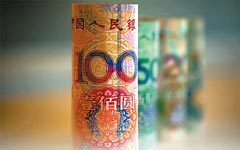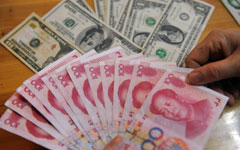Government must build an effective financial market that serves transformation and upgrading and the demands of SMEs
Against the backdrop of a fluidity policy that is prone to tightening and the accelerating interest rate marketization, as well as the substantial shift in the United States' monetary policy, it is urgent that China stabilize its economic growth and adjust its economic structure through enforcing a set of policy combinations and lowering the financing costs for the real economy.
|
 |

|
Recent financial data indicate China's social financing suffered a drastic contraction in February and the newly increased financing volume in the first two months saw a negative growth from a year earlier. As the result of its moderately tightening monetary policy and continuous efforts to rein in shadow banking activities, the country's M2 supply is now within a reasonable growth range and its entrusted and trust loans have been on the decline.
The balance sheet among the country's financial institutions has notably worsened. Since the 2008 global financial crisis, China has witnessed a fast-rising leverage ratio. Unlike the US, China's rising leverage ratio stems from the increasing financing demands of its real economy. In particular, a series of financing methods adopted by China's local governments through their financing vehicles, such as borrowing, issuance of city investment bonds and trusts, have raised its leverage ratio. The ever-expanding shadow banking business among some commercial banks has also resulted in a rise in their off-balance sheet leverage ratio.
Through comparisons between the explosive growth of China's social financing in 2009 and that in the latter half of 2012, we can see that the country's debt expansion in 2012 played an obviously weaker role than in 2009 in driving its gross domestic product growth. Furthermore, the big size of accumulated debts has also increasingly proved to be a drag on China's economic growth. China's trust assets increased by 46 percent year-on-year to hit a record high in 2013. Under huge pressures to repay its colossal local debts, the efforts to change the low-efficiency of its funds distribution have also failed to have substantial effects.
Given that local government financing vehicles and real estate loans together account for nearly 35 percent of its total loans, the country's ongoing deleveraging efforts have caused a credit crunch. Local governments will have to repay trillions of yuan in trust debts due to mature this year, which will prompt them to acquire new bank loans, so the conflict between the financing difficulty for the real economy and the stunted growth of bank deposits will become further outstanding.
